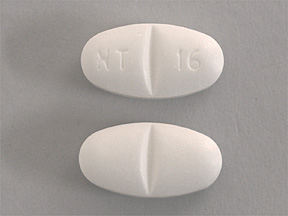Gabapentin, although originally approved for certain conditions like seizures and nerve pain (neuropathic pain), is commonly prescribed off-label for a variety of other conditions.

“Off-label” means that the drug is being used for a purpose that is not specifically approved by the regulatory agencies (such as the FDA), but has been found to be beneficial in clinical practice. Some of the most common off-label uses for gabapentin include:
1. Anxiety Disorders
- Gabapentin has been used to manage symptoms of generalized anxiety disorder (GAD), social anxiety disorder (SAD), and other anxiety-related conditions. While it’s not a first-line treatment for anxiety, it can be useful for individuals who do not respond well to traditional anxiety medications like SSRIs or benzodiazepines.
2. Bipolar Disorder (Mood Stabilization)
- Though not a primary treatment for bipolar disorder, gabapentin is sometimes used off-label as a mood stabilizer in people with bipolar disorder who cannot tolerate or do not respond to other medications like lithium or antipsychotics.
3. Insomnia
- Gabapentin has been prescribed off-label to help improve sleep quality, especially in individuals who suffer from chronic pain or other conditions that disrupt sleep. It may help with sleep initiation and maintenance.
4. Restless Legs Syndrome (RLS)
- Although there is an approved formulation of gabapentin (gabapentin enacarbil) for Restless Legs Syndrome, the regular form of gabapentin is also used off-label to treat this condition, helping to relieve the uncomfortable sensations in the legs that can disrupt sleep.
5. Migraines
- Gabapentin is sometimes used as a preventive treatment for migraines. It may help reduce the frequency of migraines in some patients, although it is not typically considered a first-line treatment for this purpose.
6. Alcohol Withdrawal and Dependence
- Gabapentin is occasionally used to help manage symptoms of alcohol withdrawal and reduce cravings in individuals with alcohol dependence. It can alleviate symptoms like anxiety, insomnia, and seizures during the withdrawal period.
7. Hot Flashes
- Some studies have shown that gabapentin may reduce hot flashes in women undergoing menopause, especially in those who are unable to take hormone replacement therapy.
8. Fibromyalgia
- Gabapentin has been used off-label to manage the widespread pain and fatigue associated with fibromyalgia, a chronic condition characterized by muscle pain and tenderness.
9. Chronic Pain (Non-Neuropathic)
- While gabapentin is mainly used for neuropathic pain, it is sometimes used off-label to treat other types of chronic pain, including pain from arthritis or back pain, when traditional pain relievers are not sufficient.
10. Pruritus (Itching)
- Gabapentin has been used to treat chronic itching (pruritus), particularly in conditions such as chronic kidney disease, liver disease, or after certain surgical procedures where itching is persistent and resistant to other treatments.
11. Post-Traumatic Stress Disorder (PTSD)
- There is some off-label use of gabapentin for managing symptoms of PTSD, particularly for anxiety, sleep disturbances, and irritability.
12. Peripheral Neuropathy from Chemotherapy or Diabetes
- While gabapentin is officially approved for diabetic neuropathy, it is also prescribed for neuropathy caused by chemotherapy or other non-diabetic conditions off-label.
13. Trigeminal Neuralgia
- Although trigeminal neuralgia is a type of neuropathic pain, gabapentin is sometimes used off-label as a second-line treatment after carbamazepine.
Though gabapentin has been shown to be effective for many of these off-label uses, the decision to use it should always be made in consultation with a healthcare provider, considering the individual’s health history and specific needs.